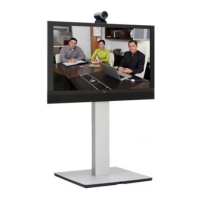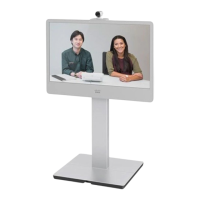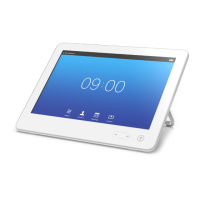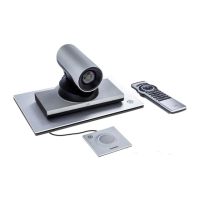D15119.02 MX700 and MX800 Administrator Guide TC7.2, AUGUST 2014. www.cisco.com — Copyright © 2014 Cisco Systems, Inc. All rights reserved.
86
Cisco TelePresence MX700 and MX800 Administrator Guide
NetworkServices settings
NetworkServices H323 Mode
Determine whether the system should be able to place and receive H.323 calls or not.
Requires user role: ADMIN
Value space: <Off/On>
Off: Disable the possibility to place and receive H.323 calls.
On: Enable the possibility to place and receive H.323 calls (default).
Example:
NetworkServices H323 Mode: On
NetworkServices HTTP Mode
Set the HTTP mode to enable/disable access to the system through a web browser. The web
interface is used for system management, call management such as call transfer, diagnostics
and software uploads.
Requires user role: ADMIN
Value space: <Off/On>
Off: The HTTP protocol is disabled.
On: The HTTP protocol is enabled.
Example:
NetworkServices HTTP Mode: On
NetworkServices SIP Mode
Determine whether the system should be able to place and receive SIP calls or not.
Requires user role: ADMIN
Value space: <Off/On>
Off: Disable the possibility to place and receive SIP calls.
On: Enable the possibility to place and receive SIP calls (default).
Example:
NetworkServices SIP Mode: On
NetworkServices Telnet Mode
Telnet is a network protocol used on the Internet or Local Area Network (LAN) connections.
Requires user role: ADMIN
Value space: <Off/On>
Off: The Telnet protocol is disabled. This is the factory setting.
On: The Telnet protocol is enabled.
Example:
NetworkServices Telnet Mode: Off
NetworkServices WelcomeText
Choose which information the user should see when logging on to the codec through Telnet/
SSH.
Requires user role: ADMIN
Value space: <Off/On>
Off: The welcome text is: Login successful
On: The welcome text is: Welcome to <system name>; Software version; Software release
date; Login successful.
Example:
NetworkServices WelcomeText: On
NetworkServices XMLAPI Mode
Enable or disable the video system's XML API. For security reasons this may be disabled.
Disabling the XML API will limit the remote manageability with for example TMS, which no
longer will be able to connect to the video system.
Requires user role: ADMIN
Value space: <Off/On>
Off: The XML API is disabled.
On: The XML API is enabled (default).
Example:
NetworkServices XMLAPI Mode: On
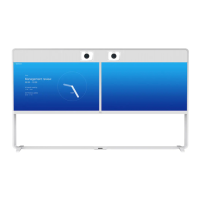
